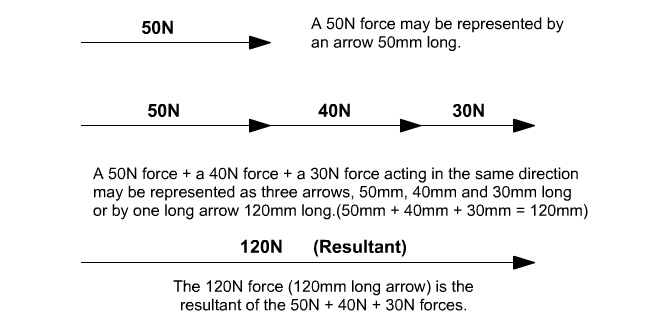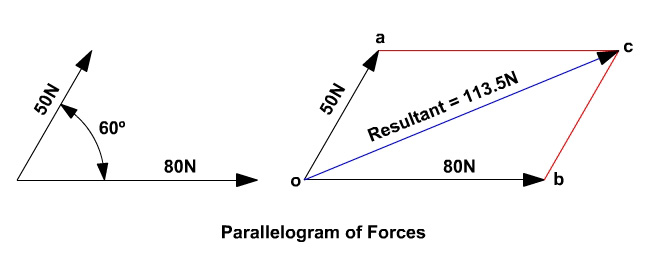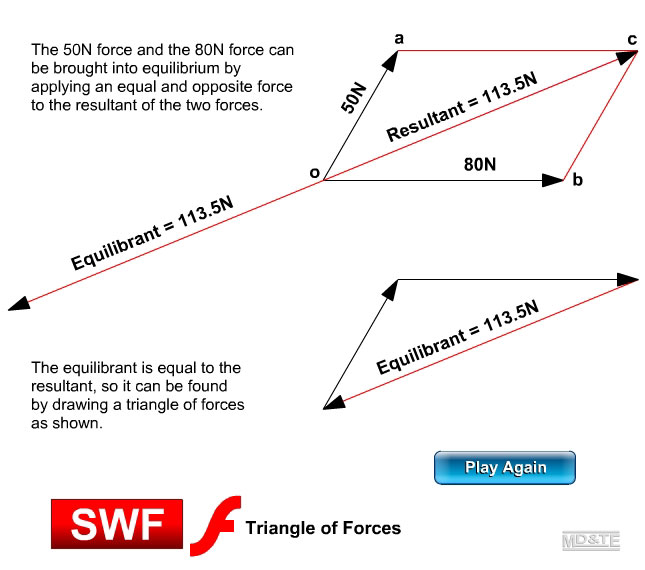Describing ForcesForce diagrams are a way of describing and representing forces. A force is described by its:
Measurement of ForceThe Newton (N) is the standard unit used for measuring a force. One Newton (N) is the amount of force required to support 100g. VectorsA force may be represented as a line. The length of the line is drawn to any convenient scale, e.g. 1N = 1mm, so 100N = 100mm, etc. The direction of the force is indicated by an arrowhead on the end of the line. |
 |
The Resultant of Two Inclined Forces
|
 |
Equilibrium of Three Forces
|
An image showing the Flash animation logo Flash animations are embedded into the pages of all my D&T Modules but there are pictorial links to the animations on this web site so that devices that cannot play Flash animations will at least show a jpeg screenshot of the animation. If your PC or personal digital assistant (PDA) can play Flash animations you may click on an image showing the Flash animation logo |
 |
